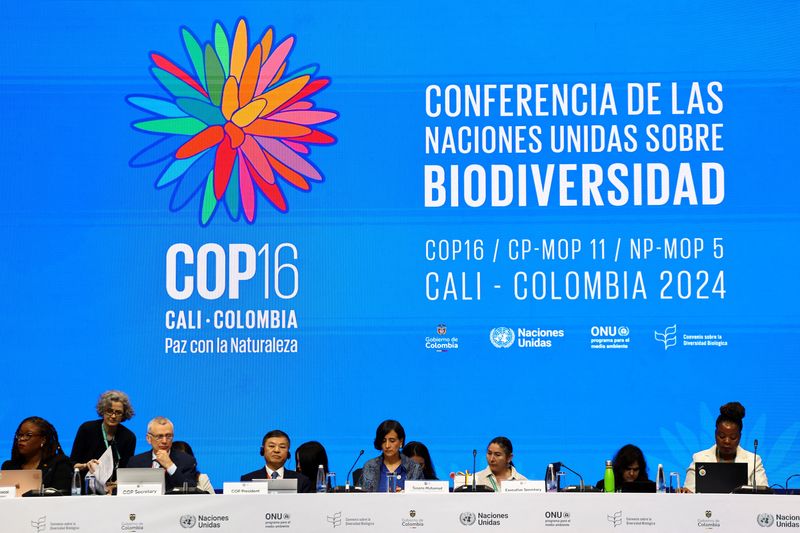By Jake Spring and Oliver Griffin
CALI, Colombia (Reuters) - Countries were at an impasse over how to fund nature conservation and other key decisions as the U.N. COP16 biodiversity summit entered its second week on Monday in the Colombian mountain town of Cali.
With nature in unprecedented decline and species going extinct faster than ever, scientists warned the world's governments that there is no time to waste.
As of today, roughly 38% of the world's tree species - totaling 16,425 species - are at risk of extinction thanks to timber logging and clear-cutting to make way for farming, mining, road-building and other development efforts, according to the International Union for Conservation of Nature and Natural Resources (IUCN).
"We need to take urgent action ... if we really want to keep these tree (species) alive," IUCN Director Grethel Aguilar told a news briefing in Cali.
The summit, which marks the 16th meeting of parties to the U.N. Convention on Biological Diversity (CBD), is tasked with figuring out how to implement 23 goals outlined in the 2022 Kunming-Montreal Global Biodiversity Framework aimed at halting and reversing nature loss by 2030.
Chief among those goals is having each country set aside 30% of its land and sea territory for conservation by 2030 - a target known as the 30-by-30 goal.
As of Monday, only 17.6% of the world's land area and inland waters were under some form of protection, according to the U.N. Environment Programme (UNEP). That is far below the 30% goal, though many countries have yet to submit pledges despite this month's deadline.
Commitments for protecting the open ocean were even lower - with only 8.4% of maritime and coastal areas now protected, the UNEP report said.
The UNEP chief urged countries to not only meet the 30% conservation goal, but also to target high-value lands and waterways for protection rather than favoring wastelands or other areas that already have little wildlife and small human populations.
"We cannot be seduced by just these numbers," UNEP Executive Director Inger Andersen said on the sidelines of the summit. "Nature cannot be put in a museum."
By the summit's end on Friday, negotiators and observers hope to achieve progress on a raft of issues touching on financing, genetic material, Indigenous representation and conservation policy.
"The discussions are going well, but it's a heavy agenda," said David Ainsworth, a spokesperson for the secretariat.
While the intensity of these discussions shows countries' engagement, it is also in some cases a sign "of a relatively low level of trust" between countries, Ainsworth said. "They have a lot of work to do this week."
So far, delegates are close to agreeing on a measure to recognize and include Indigenous groups in biodiversity decision-making, including with a new permanent presence for these groups within the official U.N. CBD process.

But many are watching for COP16 to deliver strong options for funding conservation as a measure of the summit's success.
Summit talks on how to mobilize the billions of dollars needed to halt biodiversity loss this decade were stuck on Monday, as country delegates debated whether there should be an additional fund created to handle this financing.
